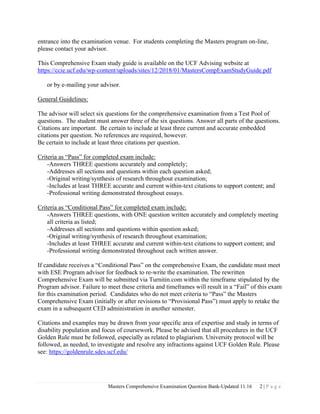This document provides an overview of the Masters Comprehensive Examination for the Exceptional Student Education program at the University of Central Florida. It outlines the purposes of the exam, which are to assess students' knowledge gained through coursework and demonstrate their understanding of CEC standards. It describes the administration and procedures of the exam, including application requirements, exam dates and locations, and grading criteria. Key areas of focus for the exam questions are also summarized, based on the CEC Common Core standards for special education teachers.








